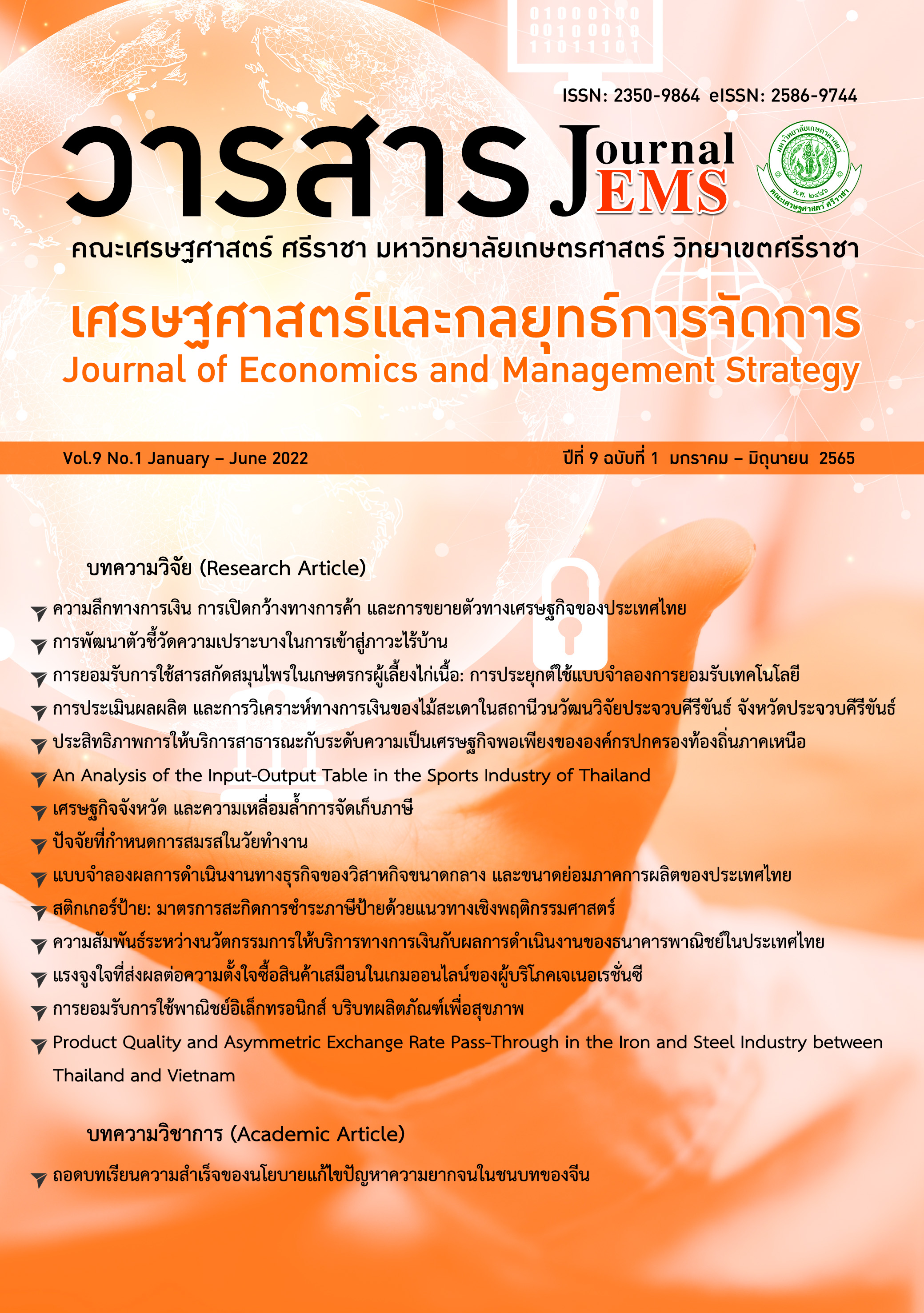Lessons Learned: Success of Poverty Alleviation Policy in Rural China ถอดบทเรียนความสำเร็จของนโยบายแก้ไขปัญหาความยากจนในชนบทของจีน
Main Article Content
บทคัดย่อ
บทคัดย่อ
บทความนี้มีวัตถุประสงค์เพื่อถอดบทเรียนความสำเร็จของนโยบายแก้ไขปัญหาความยากจนของประเทศจีนในด้านการใช้กลยุทธ์การจัดการปัญหาความยากจน โดยวิธีการศึกษาเอกสาร (Documentary Approach) ประยุกต์ใช้กรอบในการวิเคราะห์ด้วยแนวคิดวงจรของนโยบาย (Circle of Policy) และตัวแบบหลักเหตุผล (Rational Model) การวิเคราะห์พัฒนาการของนโยบายการแก้ไขปัญหาความยากจนของจีน ซึ่งประกอบด้วย ยุคที่ 1 การสร้างชาติและบรรเทาความยากจน (พ.ศ.2492-2520) ยุคที่ 2 การปรับเปลี่ยนระบบเศรษฐกิจ (พ.ศ.2521-2528) ยุคที่ 3 การพัฒนาและลดความยากจนขนาดใหญ่ (พ.ศ.1929-2536) ยุคที่ 4 การแก้ไขปัญหาความยากจนด้วย “แผนแปด-เจ็ด” (พ.ศ.2537-2543) ยุคที่ 5 การสร้างสังคมกินดีอยู่ดีโดยรวม (พ.ศ.2544-2555) และ ยุคที่ 6 นโยบายแก้ไขปัญหาความยากจนอย่างตรงจุดและสร้างสังคมกินดีอยู่ดีถ้วนหน้า (พ.ศ.2556-2563) ผลการวิเคราะห์นโยบายสามารถถอดบทเรียนความสำเร็จในการแก้ปัญหาความยากจนได้ 6 ประเด็นดังนี้ 1) การสร้างความมั่นคงทางอาหาร 2) การสร้างอาชีพและรายได้โดยใช้เกษตรสมัยใหม่ 3) การขยายการพัฒนาให้ครอบคลุมทุกพื้นที่ 4) การส่งเสริมโครงสร้างพื้นฐานและลดความเหลื่อมล้ำ 5) การจัดสวัสดิการและพัฒนาระบบประกันสุขภาพ และ 6) การปรับปรุงกลไกการแก้ไขปัญหาความยากจนให้ตรงจุด การจัดการปัญหาความยากจนด้วยนโยบายที่กล่าวมานี้ ประเทศจีนได้ดำเนินการอย่างต่อเนื่อง โดยมีการปรับเปลี่ยนกลไก วิธีการในการแก้ไขปัญหาให้สอดรับกับบริบททางเศรษฐกิจและสังคมในแต่ละช่วงเวลา งานวิจัยนี้มีข้อเสนอแนะคือ ตัวแสดงหรือรัฐในฐานะฝ่ายกำหนดนโยบายควรส่งเสริมให้ประชาชนที่ยากจนมีทุนการดำรงชีพมากขึ้น อนึ่ง รัฐควรใช้เครื่องมือทางเศรษฐศาสตร์ควบคู่กับวิธีทางสังคมศาสตร์ด้วย เช่น การประยุกต์ศาสตร์พัฒนาสังคม โดยเฉพาะมโนทัศน์ การดำรงชีพอย่างยั่งยืนไปศึกษาประเด็นที่เกี่ยวข้อง เพราะว่าการวัดความยากจนด้วยเครื่องมือทางเศรษฐศาสตร์อาจไม่เพียงพอสำหรับปัญหาความยากจนสัมพัทธ์ในอนาคต
ABSTRACT
This article aims to draw lessons learned from the success of China's poverty alleviation policies by using documentary research. The “Circle of Policy” concept and “Rational Model” were used as a framework for analysis. The results show that China's poverty alleviation policy can be divided into six development periods: 1) Nation building and poverty alleviation (1949-1977), 2) Adjustment of the economic system (1978-1985), 3) Large-scale development and poverty alleviation (1986-1993), 4) Poverty alleviation through "Eight-Seven Plan"(1994-2000), 5) Promotion of the holistic prosperous society (2001-2012), and 6) Targeted poverty alleviation and improvement of the universal prosperous society policy (2013-2020). The results of the policy analysis capture the experience of six characteristics of poverty reduction: 1)building food security, 2) creating jobs and income through modern agriculture, 3) expanding development to all sectors, 4) developing infrastructure and reducing inequality, 5) developing social welfare and health insurance systems, and 6) improving poverty reduction mechanisms. China has continuously implemented these poverty alleviation measures, with some changes in mechanisms and problem-solving methods to suit the socio-economic context of each development period. Suggestions from this research are (1) actors or state as the policy-makers should support the poor people to have more livelihood capital. (2) The state should also use economic tools in conjunction with social science approaches, such as the application of social development sciences, especially the concept of sustainable livelihood to understand related poverty issues since measuring poverty with economic tools alone may not be enough for tackling relative poverty problems in the future.
